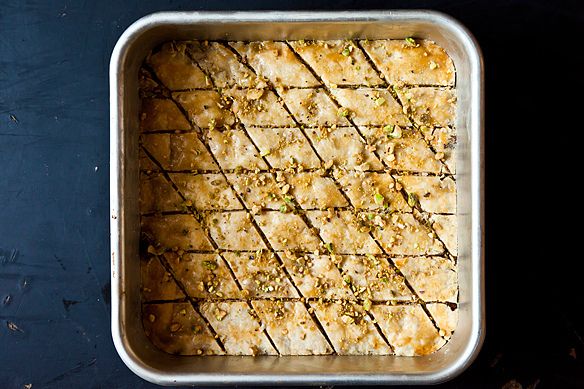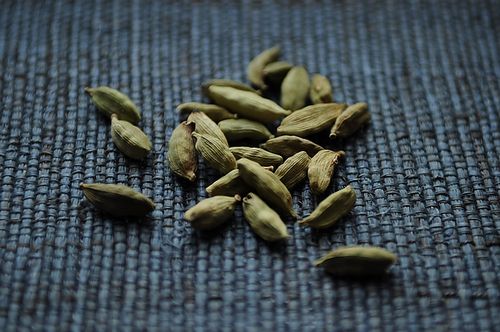
The first day of Spring is today, March 20. But did you know that it's also the first day of the Iranian year 1391?
The Iranian New Year is called Norooz, which literally means "new day," and it happens each year on the Vernal Equinox (also known as the first day of the spring season). Such a lovely time of year to start afresh, don't you think? Norooz is by far the country's biggest holiday, and it's been celebrated in the same way for centuries and centuries -- which is more than you can say for those "2012" sunglassses left over from last December 31.
Many of the traditions around Norooz are based on food, cooking, and meals with loved ones -- all FOOD52-friendly pursuits! Here's a look at what Iranians around the world are doing right now with their loved ones to celebrate the new year. Do you celebrate the Iranian New Year? Post about your family's traditions in the comments!
• Pastries and cookies - Families spend days making the various sweets traditional to Norooz. Number one on the list is baklava, Iranian style: flaky pastry crust surrounding a packed filling of ground almonds and cardamom, glistening with heady, fragrant rose water syrup. You can make it yourself with our Wildcard-winning Almond Baklava recipe, pictured above, from cookingProf (AKA my mother!). Another favorite is tender and pale rice flour cookies (shirini berenji), like these Rice Cookies from Taste of Beirut. The list goes on: saffron-laden almond brittle, crumbly and nutty chickpea flour cookies, ajil, a trail mix of roasted pistachios, golden raisins, dried mulberries, almonds, dried apricots, and more, and samanoo, a long-simmered pudding made from sprouted wheat, are just a few of the treats that the new year calls for. And of course any of these pairs perfectly with the endless glasses of cardamom-scented black tea served to the streams of well-wishing friends and relatives who visit each others' homes in the first weeks fo the year.
• The Seven "S"s - As Christmas has its tree and the Fourth of July its fireworks, so does Norooz have the Haft Sin, which literally means The Seven "S"s. A table is set with seven traditional items that symbolize renewal, happiness, and health in the new year. Some of them you'll recognize: an apple (sib) for health, garlic (sir) for medecine, vinegar (serkeh) for fortitude, and wheatgrass sprouts (sabzeh) for rebirth. And some are less familiar: dried sumac berries (somagh) for the red of the sunrise, oleaster (senjed) for love, and the wheat sprout pudding samanoo for affluence. This setting, usually set out with embroidered tablecloths and the family's best servingware, stays out on display for the 13 days of Norooz celebrations.

• Rice, Frittata, and Fish - No national celebration is complete without its corresponding meal, and Norooz is no exception! Families come together to eat Sabzi Polo, rice steamed with herbs like scallions, parsley, dill, and cilantro, Mahi, fish roasted with saffron, and Kuku, an emerald green herb-heavy frittata studded with sweet-tart barberries and walnuts. For a simplified take on Sabzi Polo, look to shayma's Dill Rice the Afghani Way, try this leek and potato-laden take from the February issue of Saveur for a variation on Kuku, and look to salmon and white-fleshed fish like trout as the Mahi to pair with the meal. It's a refreshing and delicious way to start off the year.
• Spring Cleaning - In keeping with the Norooz theme of renewal, houses are scrubbed from top to bottom to welcome the new year. And it doesn't stop with the house: it's customary for each family member -- children especially -- to receive new clothes and new shoes to start the Spring off on the right foot.
• Visiting the Whole Family - While the entire country is on holiday for the first days of the new year, schoolchildren are on vacation for the full 13 days of Norooz. It's during this period that families, children, parents, and friends pay short visits to members of the older generation, wishing them a happy new year and staying for tea and pastries. Children in particular are gifted envelopes of crisp bills from their elders, much like the red envelopes of the Chinese New Year.
• Thirteenth Day Out - On the unlucky thirteenth day of the new year, everyone leaves the house and goes on a picnic! It's called Sizdeh Bedar (literally "Thirteen Out-of-Doors"), and leaving the house is meant to cast bad luck out of it. It's a joyous and happy occasion, with the menu ranging from leftover Norooz sweets to the normal array of stews and rice dishes. It's also the end of the festivities -- the day after Sizdeh Bedar, it's back to business as usual. At least, until 1392.
Eid Norooz Mobarak, everyone -- happy new year! What are you doing to celebrate the arrival of Spring?




See what other Food52 readers are saying.